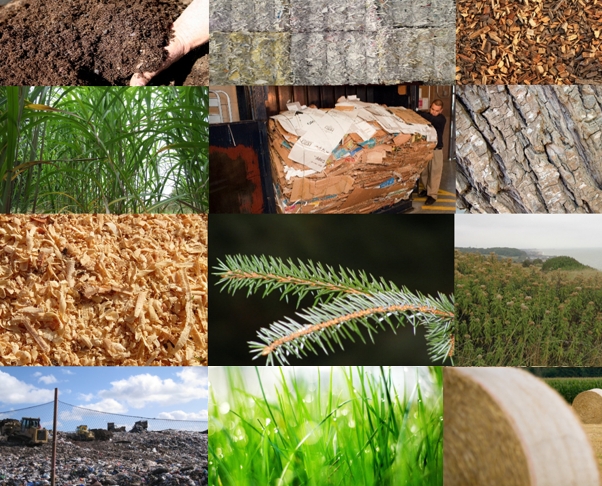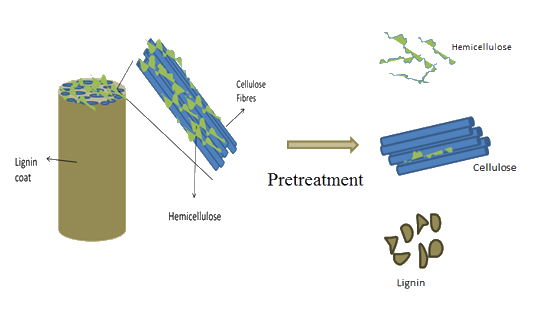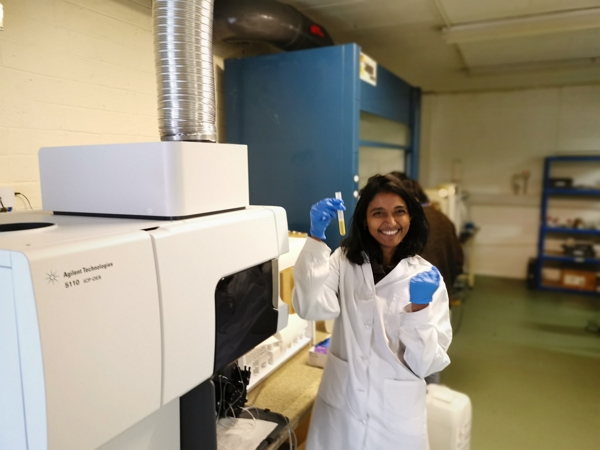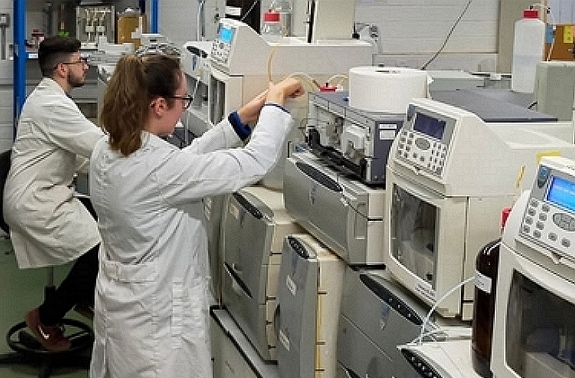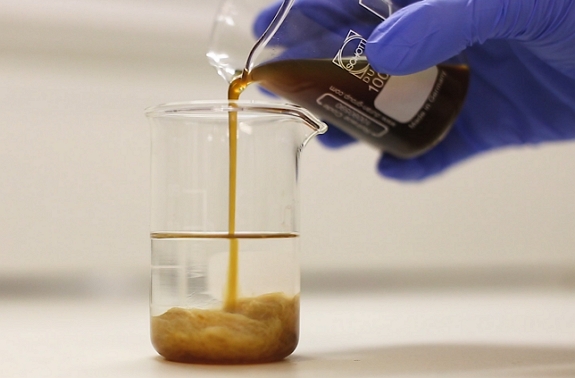Dilute-Acid Pretreatment of Biomass
Background
Lignocellulosic Biomass
Lignocellulosic biomass is defined as a plant, or plant-derived, material that is mostly composed of cellulose, hemicellulose, and lignin. Lignocellulosic feedstocks are highly abundant, covering many biomass types including grasses, wood, energy crops (e.g. Miscanthus and coppices), agricultural residues (e.g. straws and corn stover), and municipal wastes.Lignocellulosic feedstocks are highly abundant and can often be sourced sustainably, at low cost, without leading to land-use conflicts. As a result, there is currently great interest in obtaining chemicals, fuels, and biomaterials from such biomass.
However, the hydrolysis of lignocellulosic polysaccharides is not easy and is influenced by the complex inter-associations between hemicellulose and cellulose and between these polysaccharides and lignin in the lignocellulosic matrix. In particular, the crystalline nature of much cellulose and the existence of a physical barrier of lignin surrounding the cellulose fibres are said to be major contributors to the recalcitrance of cellulose.
The mechanism of hydrolysis is further complicated by the fact that different process intensities are required for the hydrolysis of cellulose versus hemicellulose. The more intense conditions required for cellulose hydrolysis may degrade the sugars hydrolysed from hemicellulose (to products such as furfural and formic acid).
For this reason, most hydrolysis technologies employ pre-treatment processes that aim to break apart the matrix (and in particular the associations between lignin and cellulose), reduce cellulose crystallinty, and hydrolyse hemicelluloses, hence separating the hydrolysate from cellulose which can then undergo more severe/targeted treatment.
Get more info...Biomass Hydrolysis
Need for Pretreatment
For this reason, most hydrolysis technologies employ pre-treatment processes that aim to break apart the matrix (and in particular the associations between lignin and cellulose), reduce cellulose crystallinty, and hydrolyse hemicelluloses, hence separating the hydrolysate from cellulose which can then undergo more severe/targeted treatment.Get more info...Pretreatment Homepage
Dilute-Acid Pretreatment
The process involves treating the biomass with a dilute solution of a strong acid, typically sulphuric acid (however other acids, such as nitric and hydrochloric, can be used), at elevated temperatures. The primary goal of dilute acid pretreatment is to hydrolyze hemicellulose, breaking it down into its component sugars. This is achieved as the acid catalyzes the hydrolysis of the glycosidic linkages in hemicellulose. The resulting sugars can then be valorised (via fermentation or other pathways) into biofuels or other products.
Dilute acid pretreatment also leads to a partial redistribution and removal of lignin, making the remaining cellulose more accessible to enzymatic hydrolysis in subsequent steps.
Effects of Different Acid-Pretreatment Conditions
- Acid Concentration - Higher acid concentrations tend to increase the hydrolysis rate of hemicellulose, leading to greater sugar release. However, high acid concentrations can also result in more significant degradation of the released sugars into inhibitory compounds such as furfural and hydroxymethylfurfural (HMF).
- Temperature - Increasing the temperature also accelerates hemicellulose hydrolysis, yielding more sugars. However, just like with acid concentration, higher temperatures can also promote the formation of inhibitory compounds.
- Reaction Time - A longer reaction time can result in a higher degree of hemicellulose hydrolysis and consequently more sugar release. But, it can also lead to greater sugar degradation and inhibitor formation.
- Biomass Particle Size - Smaller biomass particles allow for better acid penetration, leading to more effective hemicellulose hydrolysis and higher sugar yields. However, reducing the particle size can require additional processing steps, which could increase the overall process cost and complexity.
- Solid Loading - Higher solid loadings (i.e., more biomass in the reaction) can lead to higher sugar concentrations after pretreatment, which is beneficial for downstream processes like fermentation. However, higher solid loadings can also make mixing more difficult and increase the viscosity of the resulting slurry, which can create challenges for subsequent processing.
Feedstock Considerations in Acid Pretreatment
- Extractives - The content and composition of the extractives is important in dilute acid pretreatment for several reasons. Firstly, some types of extractives can degrade during dilute acid pretreatment, leading to the formation of additional inhibitory compounds. Secondly, extractives can consume acid, reducing the amount available for hydrolyzing hemicellulose. Thirdly, some extractives might create a protective layer around the biomass, reducing the effectiveness of the acid pretreatment process.
- Hemicellulose Type - The type of hemicellulose can influence how readily it is hydrolyzed during dilute acid pretreatment. For instance, xylans tend to be more readily hydrolyzed than mannans. A major reason why this is the case is that xylans contain acetyl groups. During dilute acid pretreatment, these groups can be cleaved off, releasing acetic acid. The released acetic acid can enhance the hydrolysis of hemicellulose but, in high concentrations, it can also inhibit subsequent enzymatic hydrolysis and fermentation processes.
- Lignin Type - Compared to several other pretreatments, the effect of dilute-acid pretreatment on lignin content and composition of the remaining solid is relatively small. Hence, feedstocks with high lignin contents may be unsuitable for this pretreatment method. Also, during dilute acid pretreatment, some lignin can degrade, leading to the formation of a variety of phenolic compounds. These compounds can inhibit subsequent enzymatic hydrolysis and fermentation processes.
- Lignin-Carbohydrate Complexes (LCCs) - Lignin is often associated with hemicellulose in LCCs, which can affect the accessibility of hemicellulose to the acid and its subsequent hydrolysis.
- Ash Content and Composition - The ash content and composition in biomass can also influence dilute acid pretreatment. Certain minerals can act as natural acid buffers, reducing the effectiveness of the acid, while others might catalyze or inhibit the hydrolysis reaction.
- Biomass Recalcitrance - This refers to the natural resistance of biomass to degradation. The degree of recalcitrance can vary with the type of biomass and depends on factors like cellulose crystallinity and the degree of lignification. Increases in both of these characteristics leads to more recalcitrant biomass that may require more severe pretreatment conditions.
Advantages of Dilute-Acid Pretreatment
- High Sugar Yields - Compared to some other pretreatment methods, dilute acid pretreatment can yield high amounts of fermentable sugars, particularly from hemicellulose.
- Less Severe Conditions - Dilute acid pretreatment typically requires less severe conditions (i.e., lower temperatures and pressures) compared to some other pretreatment methods (e.g. steam explosion).
- Simplicity - The process is relatively straightforward and does not require complex equipment or specialized chemicals (aside from the acid).
- Flexibility - Dilute acid pretreatment can be effective for a wide range of lignocellulosic feedstocks, including hardwoods, softwoods, and agricultural residues.
Disadvantages of Dilute-Acid Pretreatment
- Formation of Inhibitory Compounds - Dilute acid pretreatment can lead to the formation of compounds such as furfural and hydroxymethylfurfural (HMF) from sugar degradation, and various phenolic compounds from lignin degradation. These compounds can inhibit subsequent enzymatic hydrolysis and fermentation processes.
- Acid Handling and Safety - The use of acid requires proper handling and safety measures, as it can be corrosive and harmful to both personnel and equipment.
- Neutralization Requirement - The acid needs to be neutralized after pretreatment before the biomass can be processed further (e.g. enzymatic hydrolysis, fermentation), which can add complexity and cost to the process.
- Limited Effect on Lignin - Dilute acid pretreatment mainly targets hemicellulose and has a limited effect on lignin. Residual lignin can inhibit the subsequent enzymatic hydrolysis of cellulose.
- Environmental Impact - The acid used in the process can have environmental impacts, particularly if not properly managed and disposed of. Additionally, the formation of inhibitory compounds can result in waste products that need to be managed.
- Energy Consumption - While less severe than some other pretreatment methods, dilute acid pretreatment still requires energy input for heating the biomass and maintaining the reaction conditions.
Dilute-Acid Pretreatment Bioprocess Development at Celignis
Our initial step would involve learning from you what your targets are for the pretreatment and what the subsequent stages of the process, and final products, should be.
Then we would undergo a detailed compositional analysis of the feedstock in order to gain an understanding of its suitability for dilute-acid pretreatment and to consider appropriate process conditions.
There would be detailed analysis of the liquid and solid outputs of these pretreatments, comparing these results with the targeted aims of the pretreatment and downstream valorisation.
If there are also plans for downstream valorisation of the liquid fraction we can also assess the suitability of various hydrolysates from the DoE for such processes.
The commercial viability of pretreatment is particularly important and should be considered throughout the project. We usually recommend to our clients that we undertake interative techno-economic analyses (TEA) at various stages of the bioprocess development, so that the experimental and scale-up work are framed in a commercially-relevant context.
Get more info...How our Bioprocess Projects Work
Other Types of Biomass Pretreament
Get more info...Mechanical Pretreatment
Get more info...Steam Pretreatment
Get more info...Hydrothermal Pretreatment
Get more info...Acid Pretreatment
Get more info...Organosolv Pretreatment
Get more info...Other Pretreatments
Get more info...Pretreatment Homepage
With regards to the pretreatment of biomass, the Celignis Bioprocess team members with the most experience in undertaking such projects are listed below. Feel free to contact them to discuss potential projects.

Lalitha Gottumukkala
Founder of Celignis Bioprocess, CIO of Celignis
PhD
Has a deep understanding of all biological and chemical aspects of bioproceses. Has developed Celignis into a renowned provider of bioprocess development services to a global network of clients.

Oscar Bedzo
Bioprocess Project Manager & Technoeconomic Analysis Lead
PhD
A dynamic, purpose-driven chemical engineer with expertise in bioprocess development, process design, simulation and techno-economic analysis over several years in the bioeconomy sector.

Dan Hayes
Celignis CEO And Founder
PhD (Analytical Chemistry)
Dreamer and achiever. Took Celignis from a concept in a research project to being the bioeconomy's premier provider of analytical and bioprocessing expertise.


